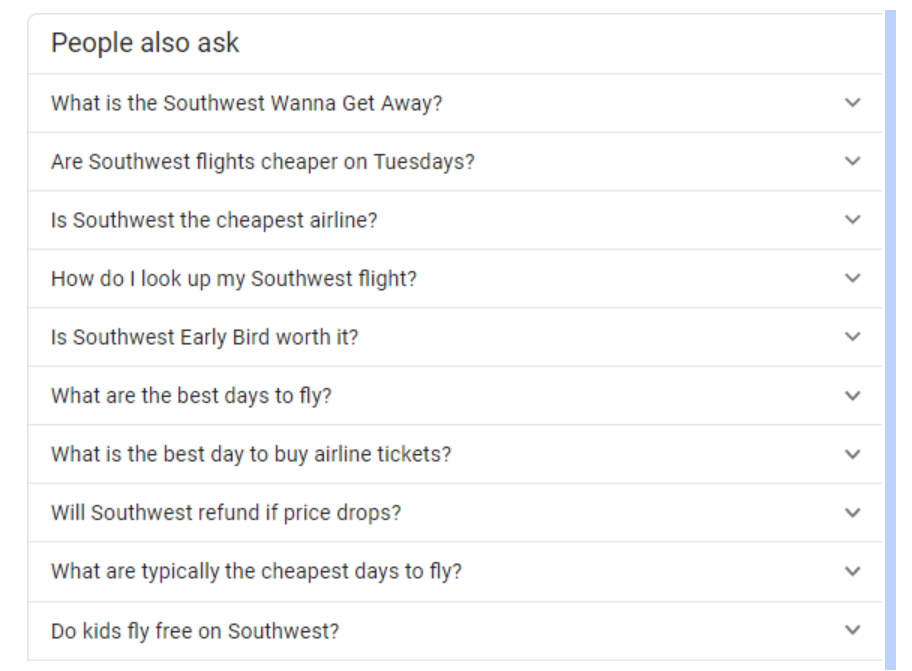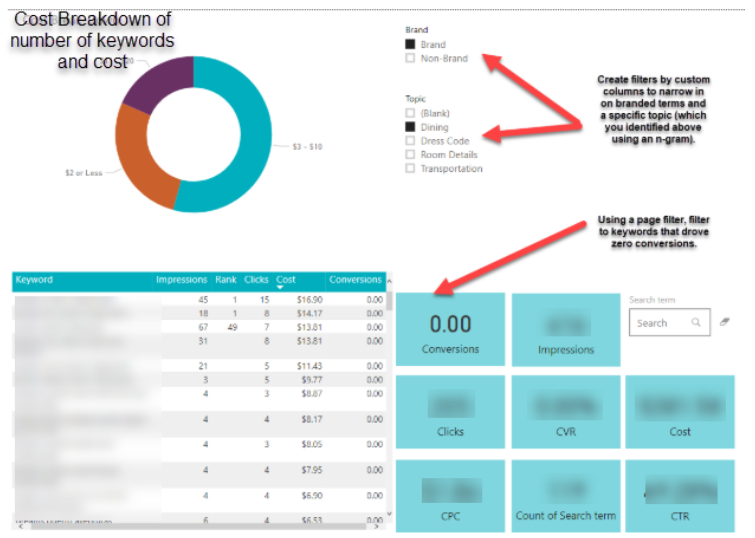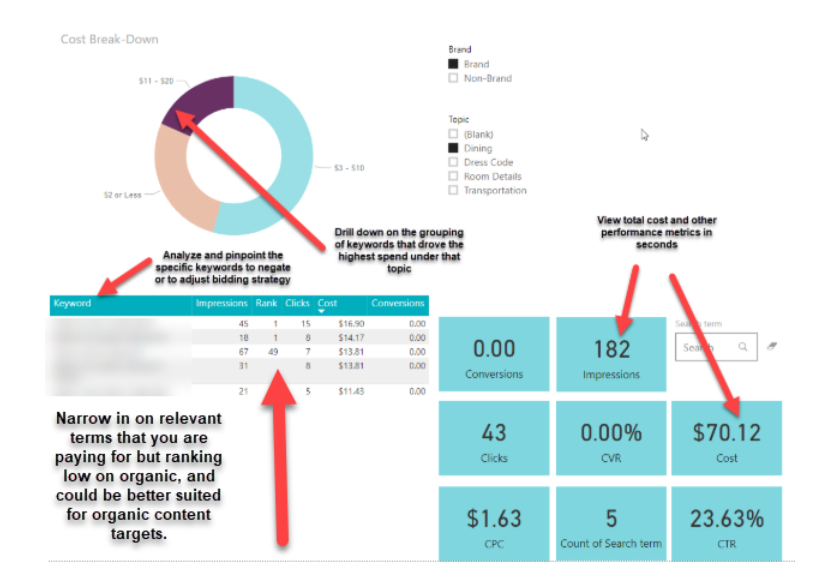Branded keywords tend to be deprioritized in organic search strategies because many businesses assume the following:
- Our site will automatically rank in organic for all branded searches
- Branded searches drive less revenue
- Customers ask branded questions after making a purchase
- Customers will call in to ask brand-specific questions
Question: Which of the above is false? Answer: (All of the above)
Customers are actively searching for specific questions about a brand online and they want to find them quickly. Branded keyword searches typically tend to have a significantly higher Click-through Rate (CTR) than non-branded keywords in organic.
Many businesses are paying to rank for branded keywords in PPC campaigns that are driving zero conversions because:
- Users are not seeing your site rank in organic
- The landing page content is not focused on answering common questions.
Don’t Miss Prime Search Opportunities to Reach Customers for Free
Businesses are wasting money, and losing out, on an opportunity to drive more sales for free in organic. For example, Southwest is only appearing for 1 out of 10 People Also Ask Results that appear for their branded term, "Southwest."

The Seer team saved a client $40,000 in annual paid spend by removing branded service-related questions from campaigns and optimizing on-site pages to rank in the top organic results.
Interested in getting these results for your business? Follow these three steps to save money and build a strong user experience for your customers:
- Understand your customer’s purchasing journey: Focus on specific questions that users have about your business in the “purchase” or bottom-of-the-funnel stage
- Find cost savings: Use PowerBi or another data analysis tool to find queries where you are wasting spend quickly
- Optimize content for organic rankings: Optimize existing pages or create new content to own the SERP for branded customer questions.
1. Understand Your Customers' Purchasing Journey
What questions do customers have about your brand? There are a variety of methods to find this information. I’ve compiled the top three ways I use to find this data effectively.
Customer Interviews
The best way to learn about what your customers really care about is by asking them! The common customer “bottom-of-the-funnel” questions include shipping information, return information, hours of operation, and contact information for customer service. These are only beginning to scratch the surface for your specific business.
Interview your customers directly, hear about their pain-points, concerns, issues, and challenges when landing on your site and learning about your business.
Focus your questions on customers’ bottom-of-the-funnel experience to narrow in on customer service content.
- Example Questions: What questions or concerns do you have before taking a [site conversion i.e. placing X product in your shopping cart or before submitting a lead form]?
Once a customer lists the questions and concerns, drill in on each one:
-
- Why do you have this concern?
- How does my site currently answer this question (if at all)?
- How could my site better answer this question?
People Also Ask
Google shares common questions people have about your business directly in People Also Ask (PAA). This is a helpful, free resource that gives you a first-hand glimpse into what your customers are asking online.
Using a keyword tool, like STAT, pull data on the top 10 PAA for each of your target keywords. Check out this video on how to analyze PAA data in Power Bi in minutes:
Keyword Research
In addition to reviewing PAA's, good ol’ keyword research will always be a valuable way to learn what your customers want to learn about in relation to your brand.
When first conducting branded keyword research, I recommend following these steps:
- Pull a branded keyword list using your favorite keyword tool
- Categorize your keywords by topic using an n-gram tool to find common themes
2. Find Cost Savings
After you have an understanding of the common branded questions your customers have, it’s time to dig into where you can save money on your branded paid campaigns.
Here are the recommended steps at a high-level:
- Pull a search query report from Google Ads and import into PowerBi
- Pull the keyword ranking report from your favorite keyword tool and import into PowerBi
- ‘Marry’ the data in PowerBi using a bridge
- Group the keyword topics (discovered with the n-gram above) by creating a conditional column
- Group the keywords by number of conversions by creating a conditional column (see section ‘conditional column.’
- Analyze the data by creating visuals that pinpoint keywords with low to zero conversions and driving cost
For a detailed explanation on this process, check out this video on how to find wasted PPC spend.
Below is an example dashboard to find wasted PPC spend.
Focus on Branded Terms that Drove 0 Conversions

- Keywords that fall under this bucket (drive zero conversions), may be potential terms to negate or opportunities to reduce spend
Find Branded Organic Keyword Opportunities

3. Optimize Content for Organic Rankings
Once you’ve narrowed in on branded searches that are relevant and impactful for your business, you’re ready to compile a content optimization plan to add to existing page content or build new, tailored on-site pages to rank highly for branded terms in organic.
For helpful tips on building branded content, check out these posts:
- Seer’s How to Create Kickass Content Guide
- Watch Your Language! 7 Ways to Create Customer Service-Oriented Content
- HubSpot’s SEO Guide, Section: "How to Build an SEO Strategy"


